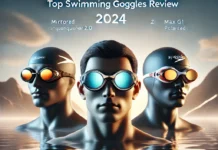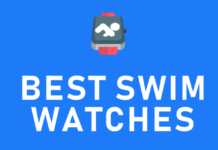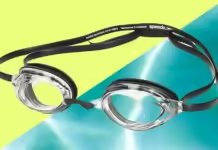The global market for swimming goggles is projected to see significant growth in the coming years. In 2023, the market was valued at USD 62.2 billion and is expected to reach USD 98.4 billion by 2031, growing at a CAGR of 7.54% during the forecast period from 2025 to 2031. Several factors are driving this growth, from rising interest in swimming as a sport and leisure activity to advancements in swim gear technology.

Key Market Drivers
- Increased Participation in Swimming
The global interest in swimming, both as a recreational activity and competitive sport, is on the rise. More people are participating in swim lessons, local swim meets, and fitness swimming, directly increasing the demand for high-quality swimming gear, especially goggles. - Rising Health and Fitness Awareness
As more individuals adopt swimming as part of their fitness routine due to its low-impact benefits, the need for durable and effective swim goggles has grown. With a focus on health and wellness, swimming becomes a key sport for people seeking to improve cardiovascular health, strength, and endurance. - Technological Advancements in Swimming Goggles
Companies are continuously innovating, offering features such as anti-fog coatings, UV protection, enhanced fit, and durability. These advancements make swimming goggles more desirable for athletes and recreational users alike. - Competitive Swimming Events
The increasing popularity of competitive events such as the Olympics and World Swimming Championships boosts the demand for high-performance goggles. Swimmers are seeking goggles that provide a competitive edge, focusing on functionality, comfort, and hydrodynamics. - Growth in Retail Channels
The expansion of both online and offline swimwear retail channels, including e-commerce platforms and specialized sports stores, makes swimming goggles more accessible to a global audience.
Market Restraints
- Price Sensitivity
Consumers’ tendency to opt for budget-friendly, lower-quality alternatives can hinder the sales of premium goggles, affecting market growth. - Seasonal Demand Fluctuations
Demand for swimming goggles can be seasonal, peaking during the summer months and in regions with warmer climates. This fluctuation can pose challenges for inventory management and steady sales. - Counterfeit Products
The presence of counterfeit goggles, particularly in online markets, can affect consumer trust and sales of high-quality, branded goggles.
Market Segmentation Analysis
The swimming goggles market can be segmented based on the following:
By Type of Goggles:
- Recreational Goggles : Focus on comfort and ease for casual swimmers.
- Competitive Goggles : Designed for high-performance swimmers, with features like anti-fog and hydrodynamic lenses.
- Prescription Goggles : Catering to swimmers who need vision correction.
- Children’s Goggles : Smaller, safer, and designed to appeal to younger swimmer
By Lens Type:
- Clear Lenses : For indoor or low-light conditions.
- Tinted Lenses : To reduce glare in outdoor conditions.
- Polarized Lenses : Further reduce glare and offer UV protection.
- Mirrored Lenses: High-performance lenses for competitive swimmers.
By Material:
- Silicone : Offers comfort, durability, and leak prevention.
- Rubber : Common in budget-friendly goggles.
- Polycarbonate : Lightweight and used in high-impact goggles for competitive swimmers.
- PVC : Used in more affordable goggles, though less durable than other materials.
Regional Analysis
- North America : The largest market due to the widespread participation in swimming as both a sport and a leisure
- Europe : Driven by the growing awareness of fitness and the popularity of competitive swimming.
- Asia-Pacific : Experiencing rapid growth due to rising disposable incomes, fitness trends, and increasing participation in water sports.
- Latin America and the Middle East & Africa : Growing steadily as more people engage in swimming and related activities.
Key Players in the Market
- Speedo
- TYR
- Arena
- Aqua Sphere
- MP Michael Phelps
- Nike
- ZOGGS
Conclusion
The swimming goggles market is poised for steady growth, driven by health trends, advancements in swimwear technology, and a growing competitive swimming landscape. Understanding market segmentation and key drivers can help businesses and affiliates like Amazon partners tap into this expanding market, meeting the diverse needs of casual swimmers, professionals, and youth.
This provides a valuable opportunity for affiliate marketers who promote high-quality swim gear, as the demand for swimming goggles continues to rise across multiple consumer segments.



















